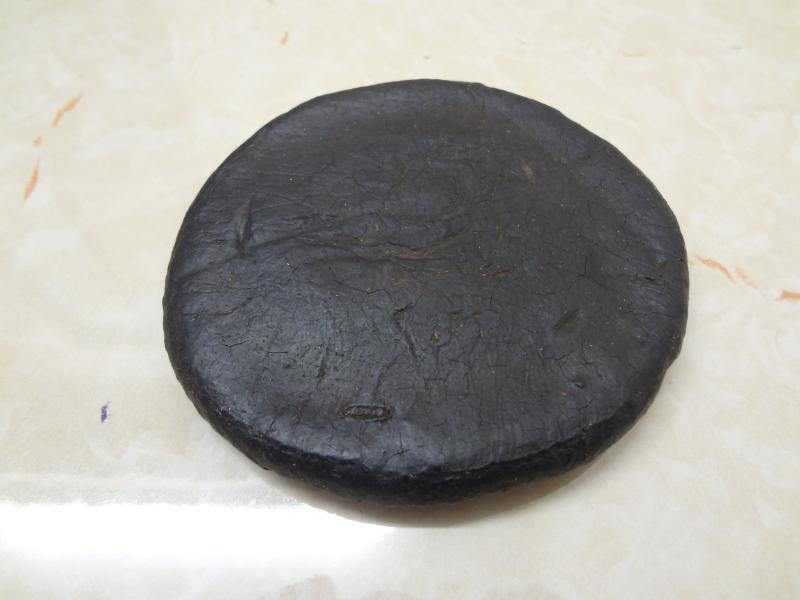Search in medicinals
Bufonis Venenum
Toad venom
蟾酥 〔蟾酥〕 chán sū

Alternate Chinese names: 蟾蜍眉脂 chán chú méi zhī; 癞蛤蚂浆 lài há mǎ jiāng; 蛤蟆酥 há má sū; 蛤蟆浆 há má jiāng; 蟾蜍眉酥 chán chú méi sū
Kingdom: Animal
Origin in PRC Pharmacopoeia: Bufo bufo gargarizans Cantor; Bufo melanostictus Schneider. (PRC Pharmacopoeia)
Origin in unofficial sources: Bufo bufo gargarizans Cantor*; Bufo melanostictus Schneider*
Use: Medicinal
Category: External-use agents / Toxin-attacking, worm-killing, and itch-relieving agents
Properties: Acrid; warm; toxic. (Some sources add sweet.)
Channel entry: Heart channels. (some sources give stomach channel.)
Actions and indications:
- Resolves toxin and disperses swelling: Flat-abscesses, welling-abscesses and clove sores; painful swollen throat.
- Opens the orifices and arouses the spirit: Sand distension (shā zhàng) with abdominal pain,
vomiting and retching , diarrhea, and in severe cases, clouded spirit due to summerheat-damp with foul turbidity or unclean food and drink. - Relieves pain: Toothache.
- Additional uses: Chán sū disperses accumulations and is used to treat gān disease in children.
Dosage and method: Oral: 0.015–0.03g, in powders or pills. Also used externally.
Warnings: Chán sū is toxic, so it cannot be used in excessive quantities. When used externally, contact with the eyes should be avoided. Chán sū is contraindicated in pregnancy.
Product description: The secretion of the skin glands of the toad, the animal's only defense, comes in dried form as a round cake or button, slightly thicker in the middle than at the edges. It is about 6–10 cm in diameter, and 2–3 cm thick in the middle. It is purple-brown or brown-black, smooth and shiny on the upper side and rougher on the underside. The best quality is slightly translucent, brittle, has a purple hue, and numbs the tongue when licked.
Quality: The best quality is smooth and shiny on the upper side.
Production area: Produced mainly in Héběi, Shāndōng, Sìchuān, Húnán, Jiāngsū, and Zhèjiāng, and to a lesser extent in Liáoníng, Húběi, and Xīnjiāng.
Etymology: The name chán sū 蟾酥, literally toad brittle,
describes the texture of the dried venom.
See: Chán sū (蟾酥 Bufonis Venenum, toad venom)
Back to search result Previous Next